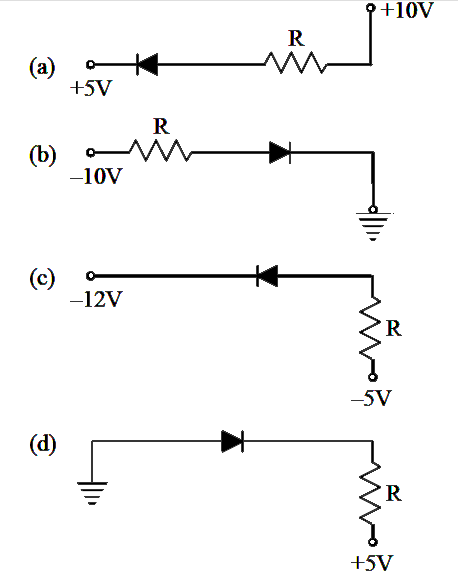In the following, which one of the diodes is reverse biased ?
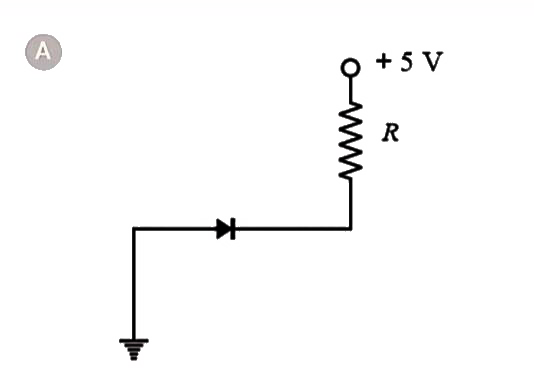
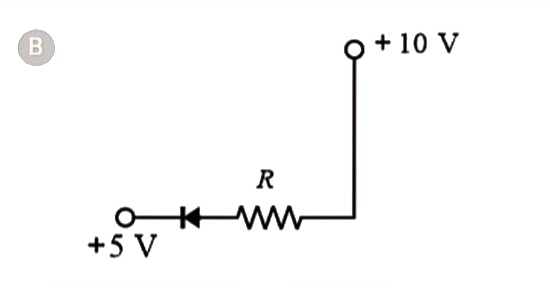

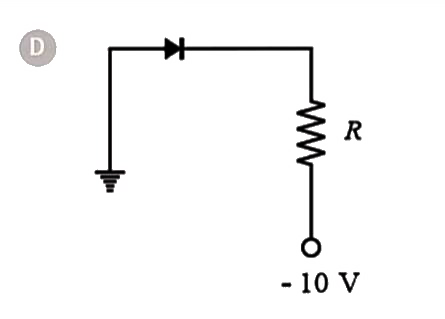
The correct Answer is:A
To determine which diode is reverse biased, we need to understand the conditions for a diode to be in reverse bias. A diode consists of a P-type and an N-type semiconductor.
1. Identify the Diode Configuration:
- A diode is reverse biased when the P-side (anode) is connected to a lower voltage than the N-side (cathode). This means that the P-side is at a negative potential relative to the N-side.
2. Analyze the Given Voltages:
- We need to look at the voltage values provided for each diode configuration. The voltages will help us determine the biasing condition of each diode.
3. Compare the Voltages:
- For each diode, compare the voltage at the P-side with the voltage at the N-side:
- If the voltage at the P-side is lower than the voltage at the N-side, the diode is reverse biased.
- If the voltage at the P-side is higher than the voltage at the N-side, the diode is forward biased.
4. Evaluate Each Option:
- Let's analyze the options:
- Option A: P-side at 0V, N-side at -10V. (Reverse biased)
- Option B: P-side at -5V, N-side at -12V. (Forward biased)
- Option C: P-side at +10V, N-side at +5V. (Forward biased)
- Option D: P-side at 0V, N-side at -10V. (Reverse biased)
5. Conclusion:
- From the analysis, we can conclude that the diode in Option A is reverse biased because the P-side (0V) is at a higher potential than the N-side (-10V).
Final Answer:
The diode that is reverse biased is Option A.
- A diode is reverse biased when the P-side (anode) is connected to a lower voltage than the N-side (cathode). This means that the P-side is at a negative potential relative to the N-side.
- We need to look at the voltage values provided for each diode configuration. The voltages will help us determine the biasing condition of each diode.
- For each diode, compare the voltage at the P-side with the voltage at the N-side:
- If the voltage at the P-side is lower than the voltage at the N-side, the diode is reverse biased.
- If the voltage at the P-side is higher than the voltage at the N-side, the diode is forward biased.
- Let's analyze the options:
- Option A: P-side at 0V, N-side at -10V. (Reverse biased)
- Option B: P-side at -5V, N-side at -12V. (Forward biased)
- Option C: P-side at +10V, N-side at +5V. (Forward biased)
- Option D: P-side at 0V, N-side at -10V. (Reverse biased)
5. Conclusion:
- From the analysis, we can conclude that the diode in Option A is reverse biased because the P-side (0V) is at a higher potential than the N-side (-10V).
The diode that is reverse biased is Option A.
Similar Questions
Knowledge Check
Of the diodes shown in the following figures, which one is reverse biased ?
A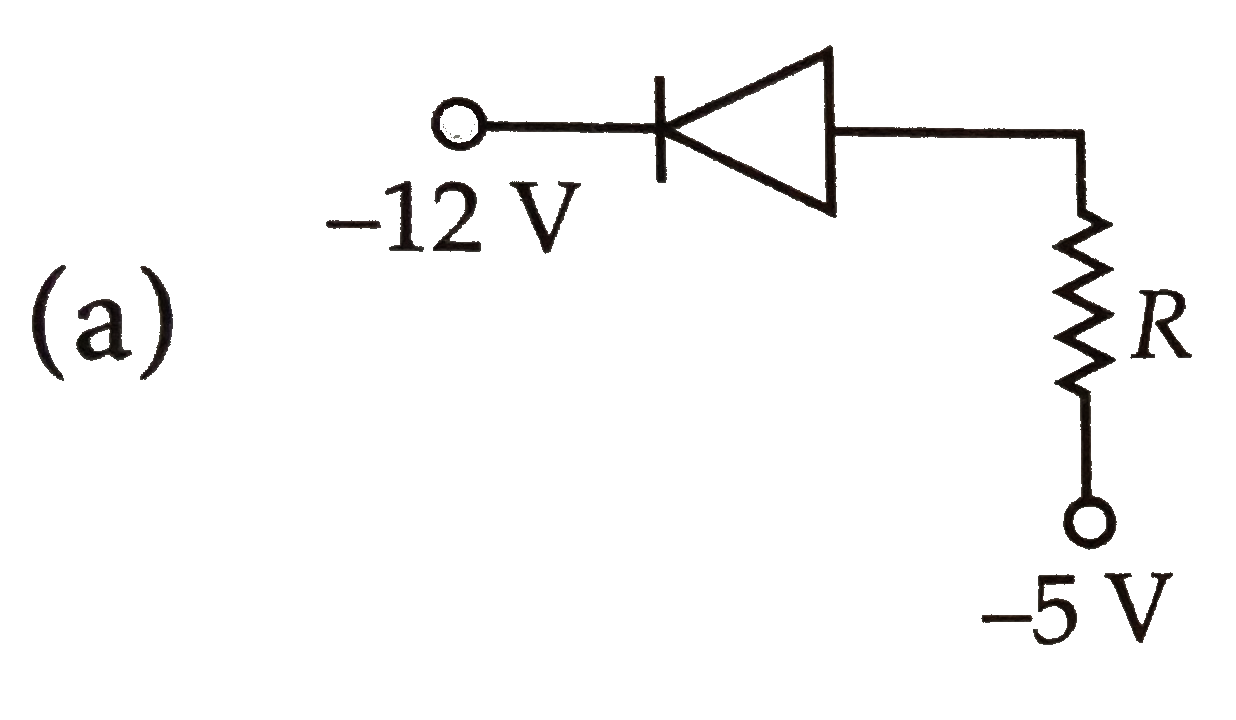 B
B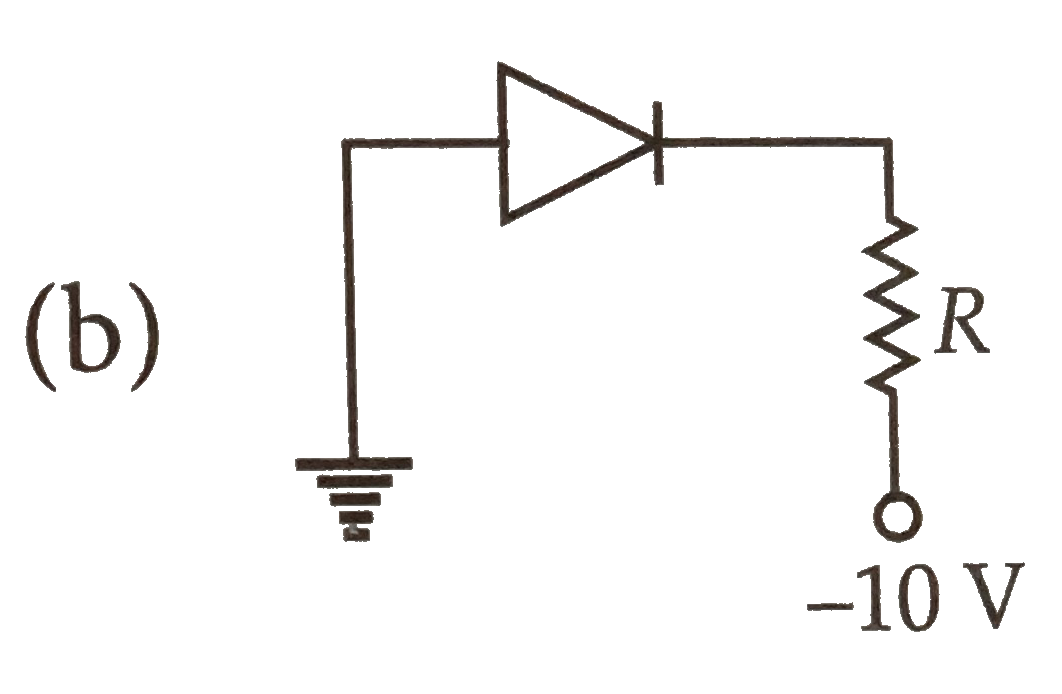 C
C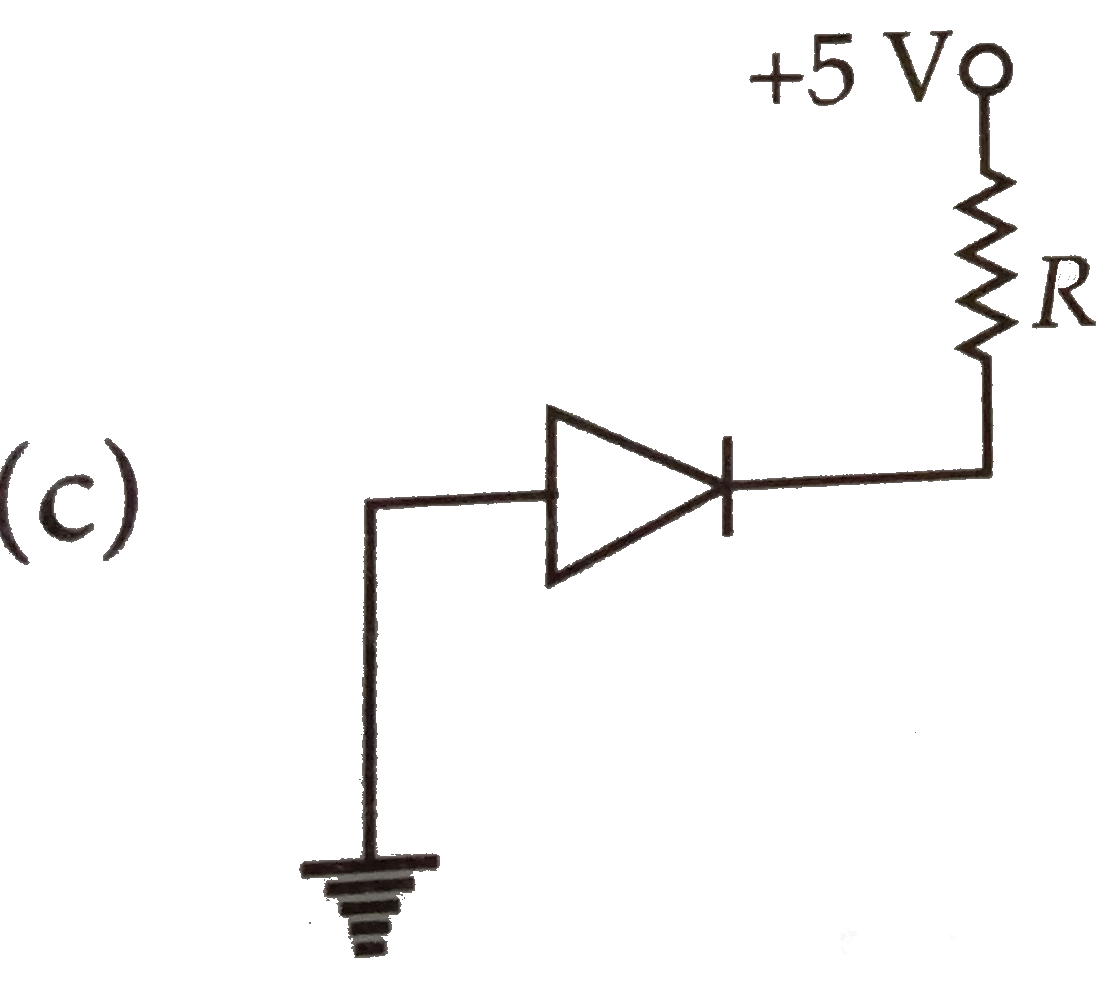 D
D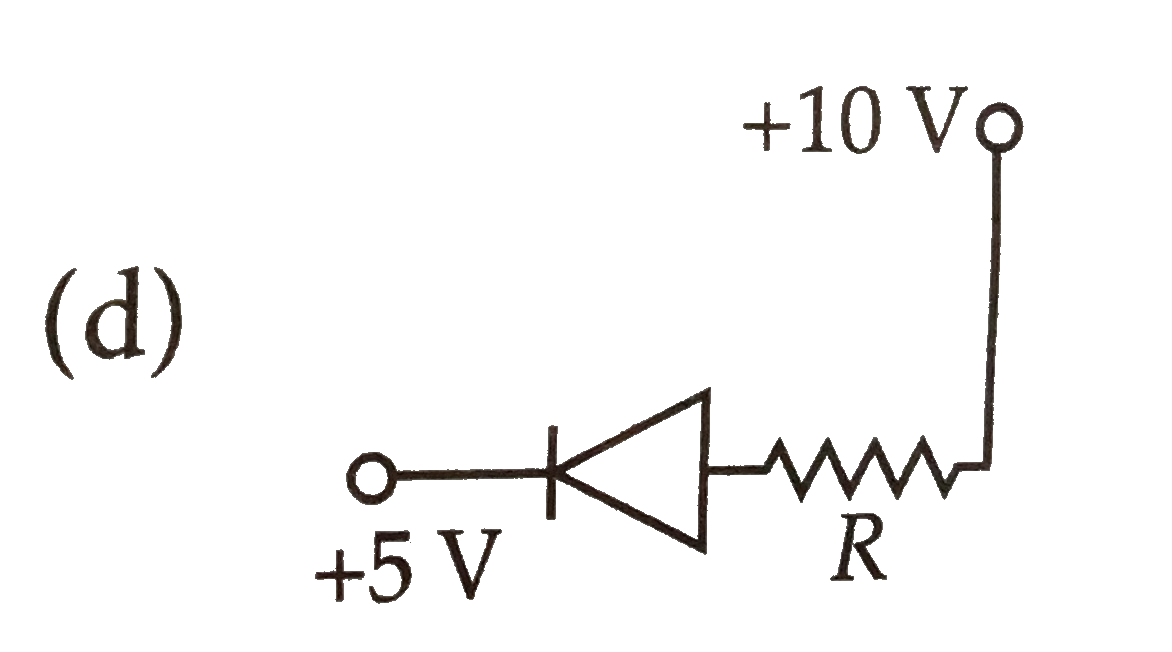
In the given figure, which of the diodes are forward biased?

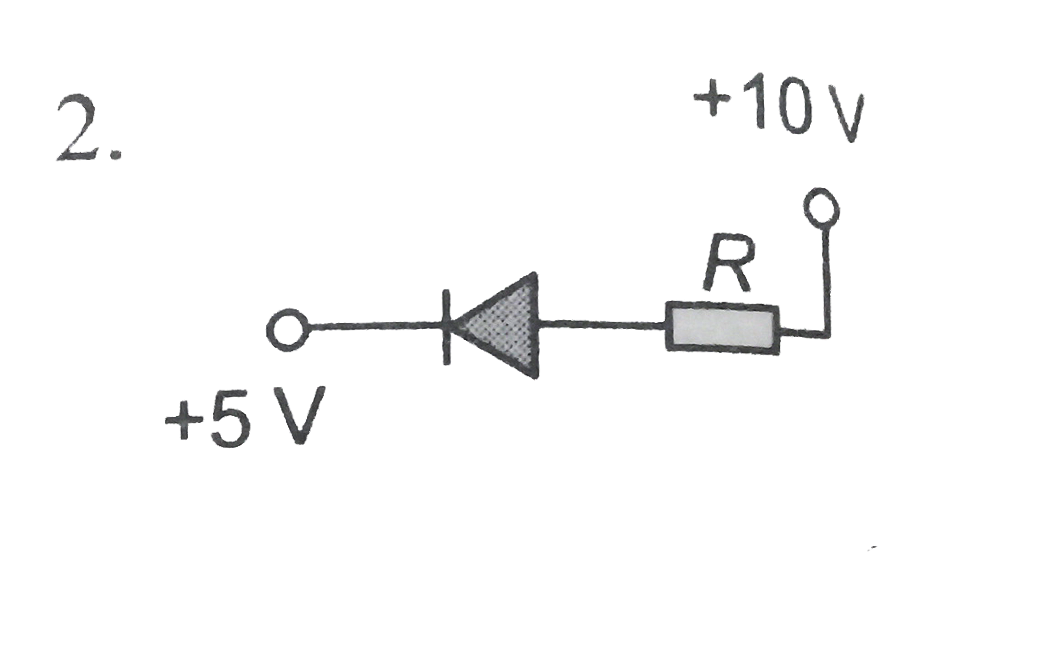
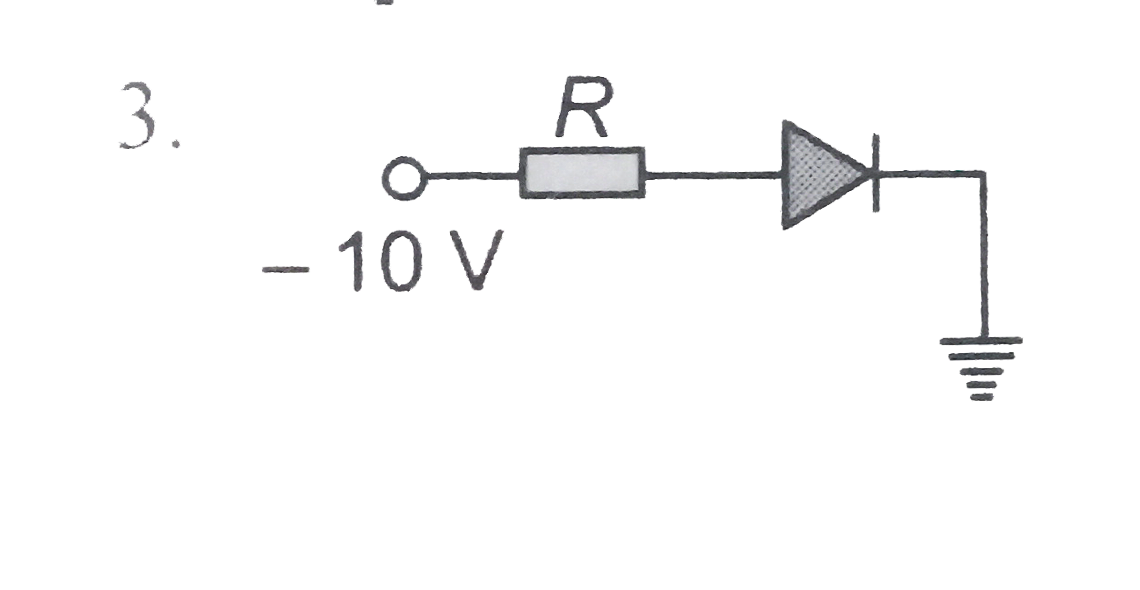
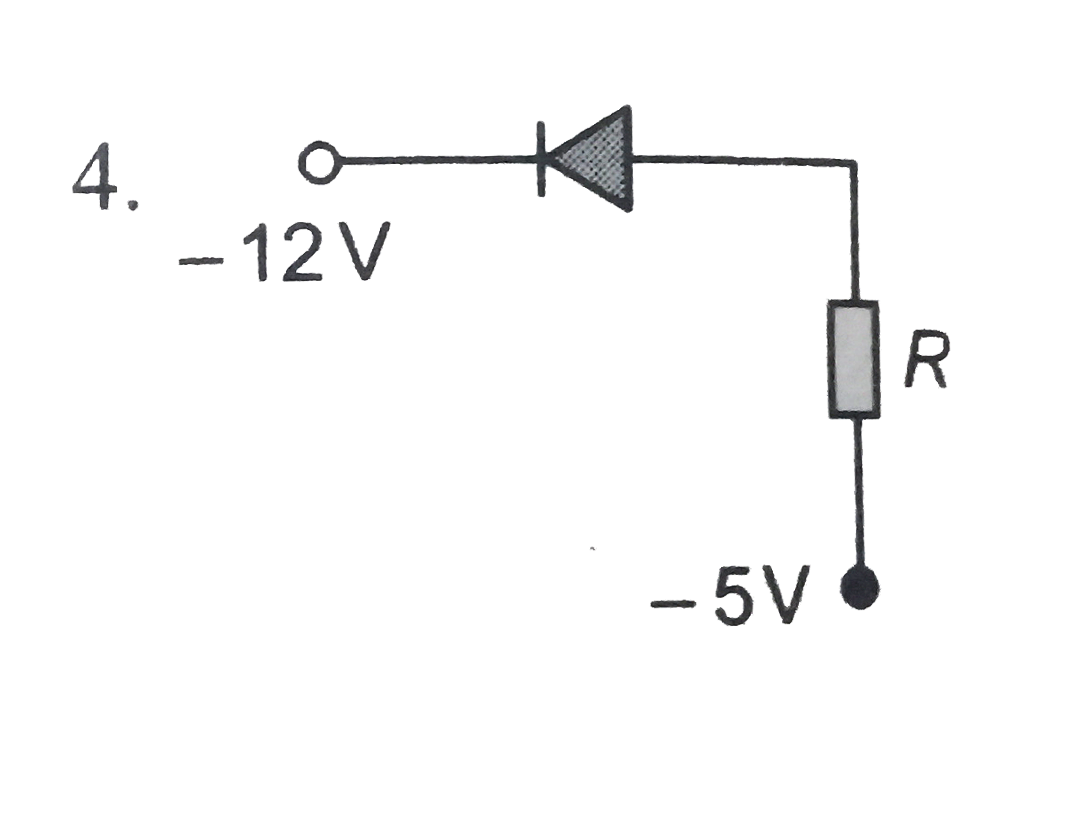
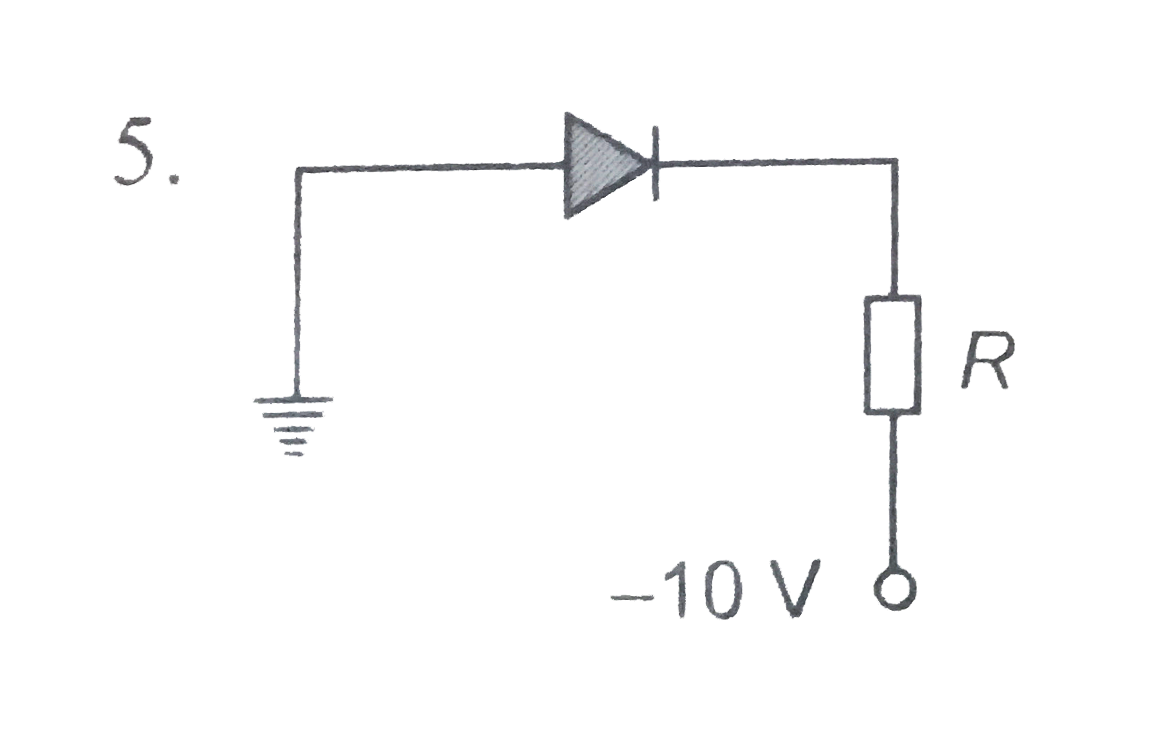
View SolutionA p−n junction diode is reverse biased. Then
View SolutionIn which of the following circuits is the diode forward biased?

View SolutionGe and Si diodes conduct at 0.3V and 0.7V respectively. In the following figure if Ge diode connection are reversed, the value of V0 changes by

View SolutionWhich of the following pn junction is not used in reverse bias?
View SolutionIn which of the following figures, junction diode is forward biased?
View SolutionIn which case is the junction diode is not reverse bias-
View Solution

